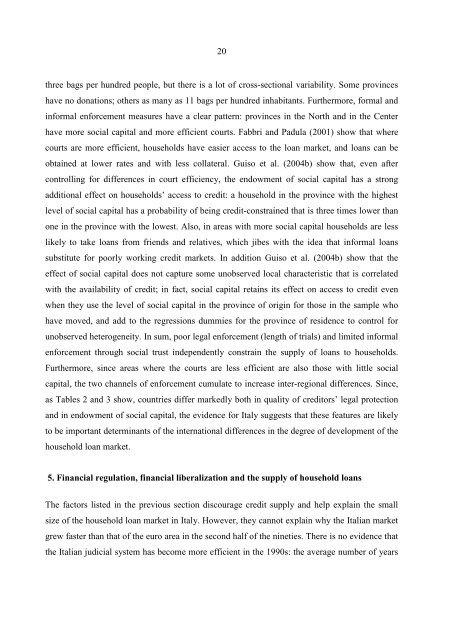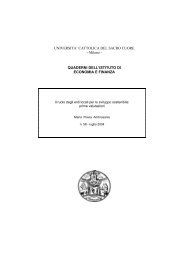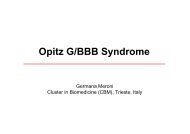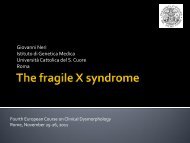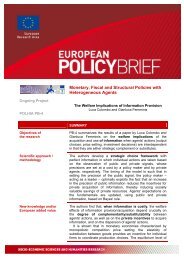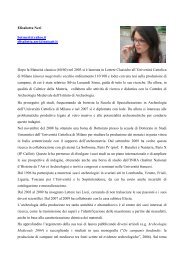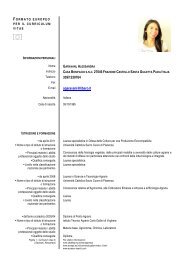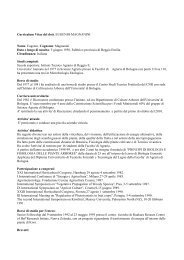REGULATION, FORMAL AND INFORMAL ... - ResearchGate
REGULATION, FORMAL AND INFORMAL ... - ResearchGate
REGULATION, FORMAL AND INFORMAL ... - ResearchGate
Create successful ePaper yourself
Turn your PDF publications into a flip-book with our unique Google optimized e-Paper software.
20<br />
three bags per hundred people, but there is a lot of cross-sectional variability. Some provinces<br />
have no donations; others as many as 11 bags per hundred inhabitants. Furthermore, formal and<br />
informal enforcement measures have a clear pattern: provinces in the North and in the Center<br />
have more social capital and more efficient courts. Fabbri and Padula (2001) show that where<br />
courts are more efficient, households have easier access to the loan market, and loans can be<br />
obtained at lower rates and with less collateral. Guiso et al. (2004b) show that, even after<br />
controlling for differences in court efficiency, the endowment of social capital has a strong<br />
additional effect on households’ access to credit: a household in the province with the highest<br />
level of social capital has a probability of being credit-constrained that is three times lower than<br />
one in the province with the lowest. Also, in areas with more social capital households are less<br />
likely to take loans from friends and relatives, which jibes with the idea that informal loans<br />
substitute for poorly working credit markets. In addition Guiso et al. (2004b) show that the<br />
effect of social capital does not capture some unobserved local characteristic that is correlated<br />
with the availability of credit; in fact, social capital retains its effect on access to credit even<br />
when they use the level of social capital in the province of origin for those in the sample who<br />
have moved, and add to the regressions dummies for the province of residence to control for<br />
unobserved heterogeneity. In sum, poor legal enforcement (length of trials) and limited informal<br />
enforcement through social trust independently constrain the supply of loans to households.<br />
Furthermore, since areas where the courts are less efficient are also those with little social<br />
capital, the two channels of enforcement cumulate to increase inter-regional differences. Since,<br />
as Tables 2 and 3 show, countries differ markedly both in quality of creditors’ legal protection<br />
and in endowment of social capital, the evidence for Italy suggests that these features are likely<br />
to be important determinants of the international differences in the degree of development of the<br />
household loan market.<br />
5. Financial regulation, financial liberalization and the supply of household loans<br />
The factors listed in the previous section discourage credit supply and help explain the small<br />
size of the household loan market in Italy. However, they cannot explain why the Italian market<br />
grew faster than that of the euro area in the second half of the nineties. There is no evidence that<br />
the Italian judicial system has become more efficient in the 1990s: the average number of years


